Advertisement
Ideal for severe arthritis, large rotator cuff tear
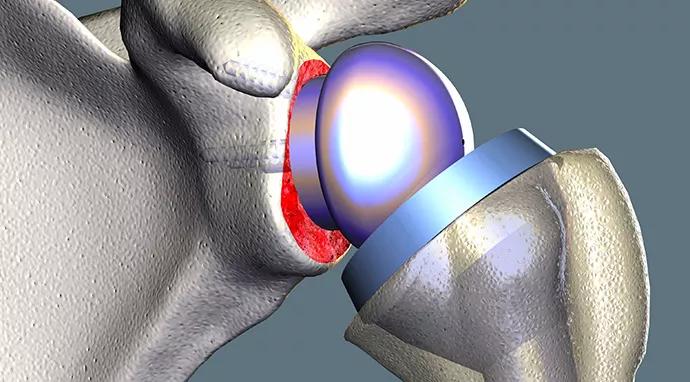
By Joseph P. Iannotti MD, PhD, and Eric T. Ricchetti, MD
Advertisement
Cleveland Clinic is a non-profit academic medical center. Advertising on our site helps support our mission. We do not endorse non-Cleveland Clinic products or services. Policy
Many patients with shoulder pain have arthritis or rotator cuff tears. Some patients develop both severe arthritis and large rotator cuff tears. This combined pathology results in severe pain and marked loss of function ‒ in particular, the inability to raise their arm overhead actively (Figure 1A).
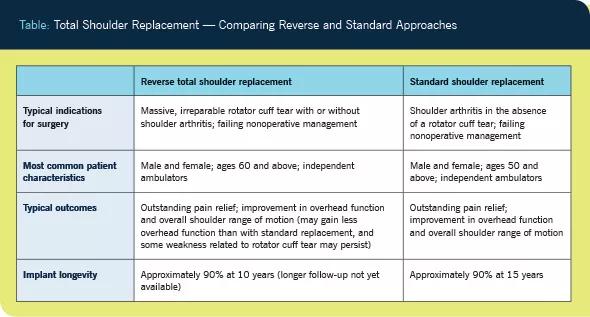
Reverse total shoulder replacement is the best option for patients failing nonoperative management of severe arthritis and a large rotator cuff tear (Figure 1B). Specifically designed to address this clinical scenario, reverse total shoulder replacement is generally performed in patients who are in their mid- to late 60s or older.
In standard shoulder replacement for arthritis, the convex side of the joint (on the humerus) is replaced with a new metal ball, and the concave side of the joint (on the scapula) is resurfaced with a new plastic socket.
This eliminates pain and improves function but relies on a well-functioning rotator cuff for optimal results and may work poorly in the presence of a large rotator cuff tear.
In reverse replacement, the concave and convex surfaces of the shoulder joint are placed on the opposite sides of the normal shoulder. A metal hemisphere is placed on the socket, and a metal and plastic socket is used to replace the ball (Figure 2). Despite the large rotator cuff tear, the change in position improves shoulder function by replacing the joint and removing any arthritis.

Figure 2
Anteroposterior (A) and axillary (B) plain radiographs of a reverse total shoulder replacement demonstrate how a metal hemisphere is placed on the old socket, while a metal and plastic socket replaces the old ball.
Advertisement
The FDA-approved reverse prosthesis, introduced in the United States in 2004, has proved to be a reliable option for patients who previously had no surgical options. More than 90 percent of patients experience significant improvement in both shoulder pain and function, including restoration of overhead arm function. Ten years after reverse replacement, implant survival is approximately 90 percent, which is comparable to the rate at 15 years after standard replacement (longer follow-up is not available).
Use of the reverse prosthesis is increasing, and its applications have broadened to include patients requiring shoulder replacement due to significant rotator cuff dysfunction for other reasons. These include:
• Failed or revision shoulder replacement
• Treatment of complex proximal humerus fractures requiring shoulder replacement
Failure of a prior shoulder replacement is often associated with rotator cuff deficiency, either from damage to the rotator cuff itself or because bone loss led to damage or destruction of the rotator cuff’s bony attachment sites (Figure 3). Acute or chronic proximal humerus fractures also may be associated with rotator cuff deficiency if the fracture causes severe damage to the bony attachment sites.
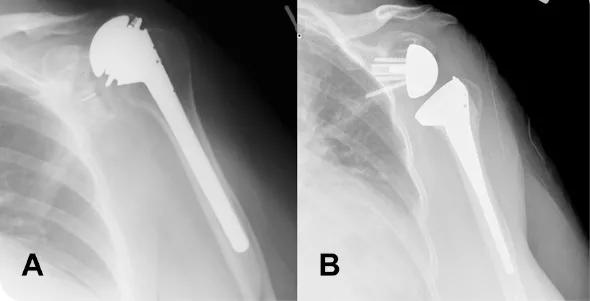
Figure 3
A: Plain radiograph shows rotator cuff deficiency and superior migration of the humeral prosthesis after standard total shoulder replacement elsewhere.
B: Postoperative radiograph after revision to reverse total shoulder replacement at Cleveland Clinic.
In both situations, surgical treatment can be difficult, and standard shoulder replacement may not reliably improve pain and function. Reverse total shoulder replacement has shown promise in improving shoulder function more reliably in these challenging clinical scenarios.
Advertisement
Patients who undergo reverse total shoulder replacement are generally hospitalized for two to three days after surgery. Physical therapy stretching exercises are started the day after surgery, and patients are encouraged to use the operative hand and elbow at waist level for activities of daily living, including eating, bathing, dressing and typing.
Shoulder- and arm-stretching exercises are done by the patient each day at home after leaving the hospital. Patients progress to strengthening exercises for the shoulder and arm as early as six weeks after surgery, and most patients complete physical therapy within six months after surgery. Limits on lifting and pushing with the operative arm are kept in place for six months after surgery.
Adherence to postoperative restrictions and the rehabilitation protocol help to decrease the likelihood of adverse events. While reverse total shoulder replacement reliably improves pain and function, and implant longevity approaches that of standard shoulder replacement, surgical complications can occur.
Adverse events take place in about 10 percent of patients undergoing reverse total shoulder replacement. The most common are:
• Postoperative hematoma in up to 4 percent of patients
• Infection in 1 percent of patients
• Dislocation in 3 percent of patients
• Stress fracture of part of the scapula in 2 percent of patients
• Nerve injury in less than 1 percent of patients
When these events occur, results are not as favorable. Many patients require additional surgery to correct the problem, including potential revision or removal of the implant if necessary.
As the use of reverse total shoulder replacement in clinical practice increases, further knowledge about optimal implant placement and design will lead to improved clinical function, fewer complications and longer prosthesis survival.
Dr. Iannotti, Chairman of the Orthopaedic & Rheumatologic Institute, can be reached at iannottj@ccf.org or 216.445.5151. Dr. Ricchetti, of the institute’s Hand and Upper Extremity Center, can be reached at ricchee@ccf.org or 216.445.6915.
Advertisement
Advertisement
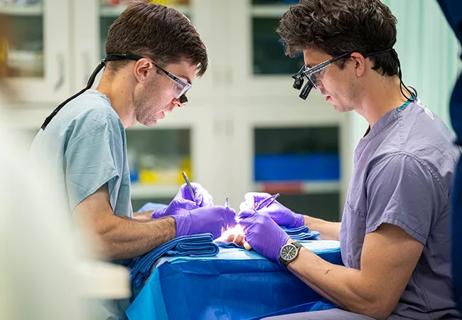
Cleveland Clinic specialists offer annual refresher on upper extremity fundamentals
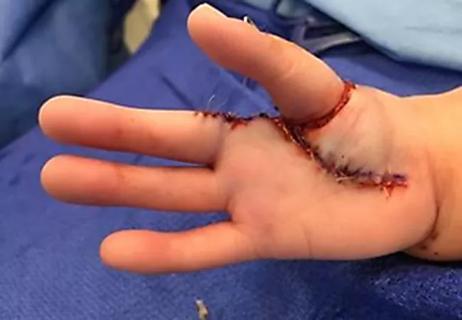
Latest concepts in the surgical creation of functional, opposable thumbs in early childhood

CT imaging using radiopaque markers can help assess healing after surgery
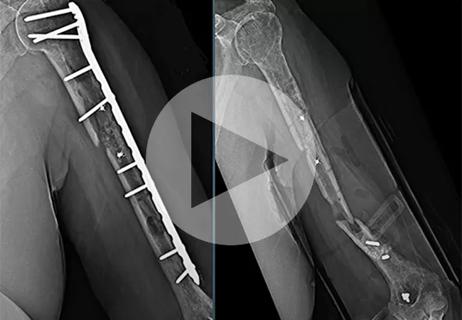
Finally, a solution after multiple revision surgeries for delayed bone healing, loose hardware and unrelenting infection
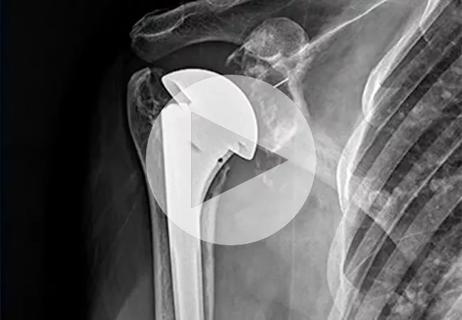
Iliac crest structural autograft repairs large, uncontained defect

Two cases show multiple factors to consider

Orthopaedic oncologist discusses the complex case
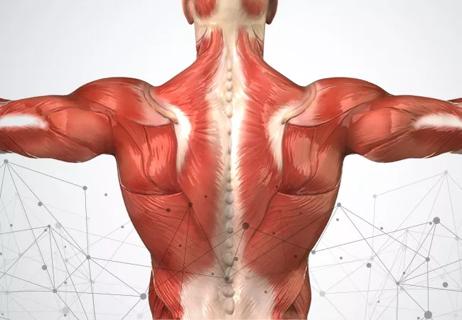
Data system aims to improve orthopaedic care and drive down healthcare costs